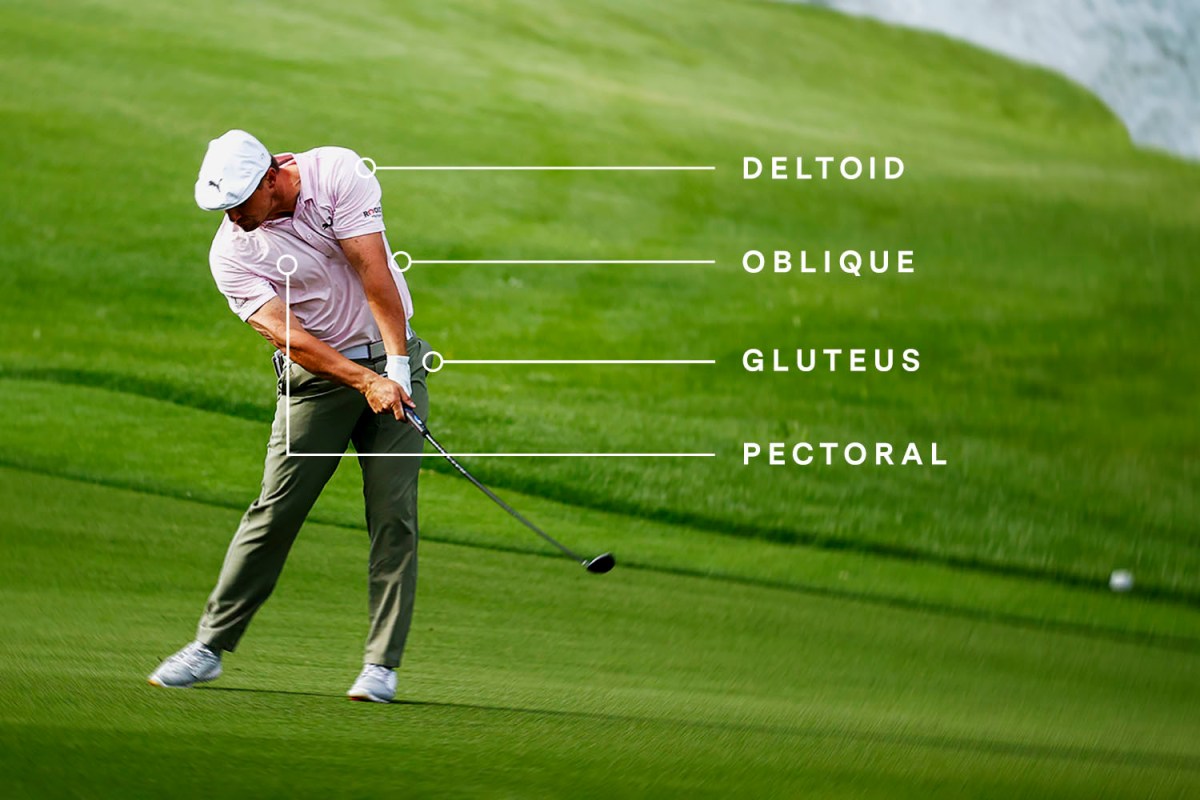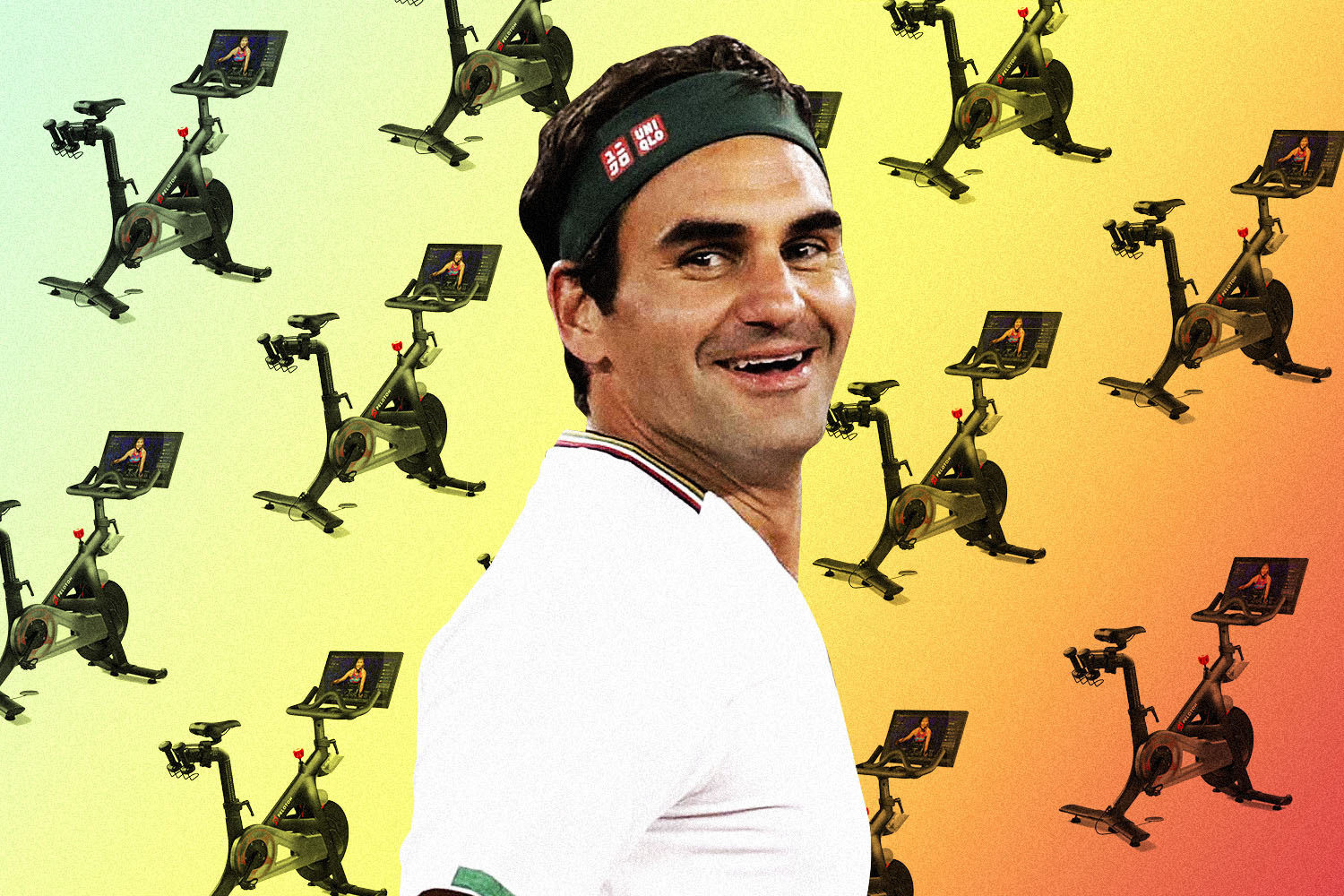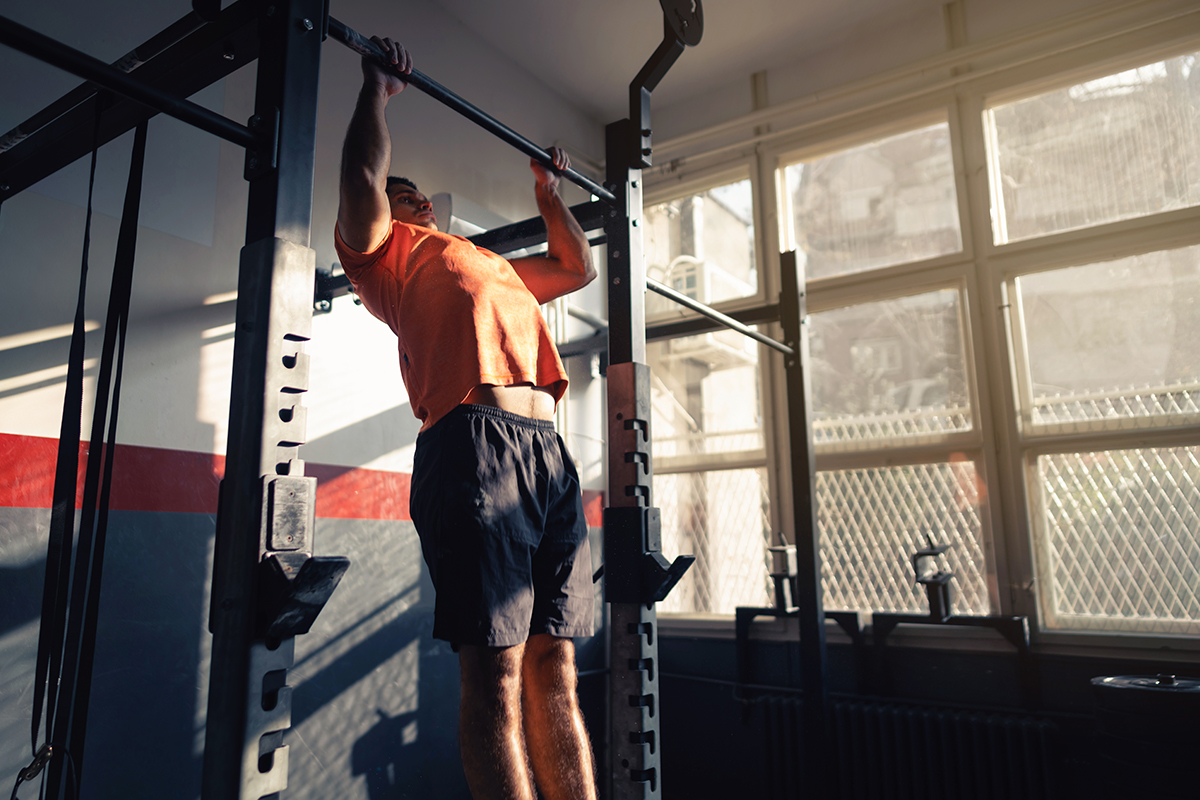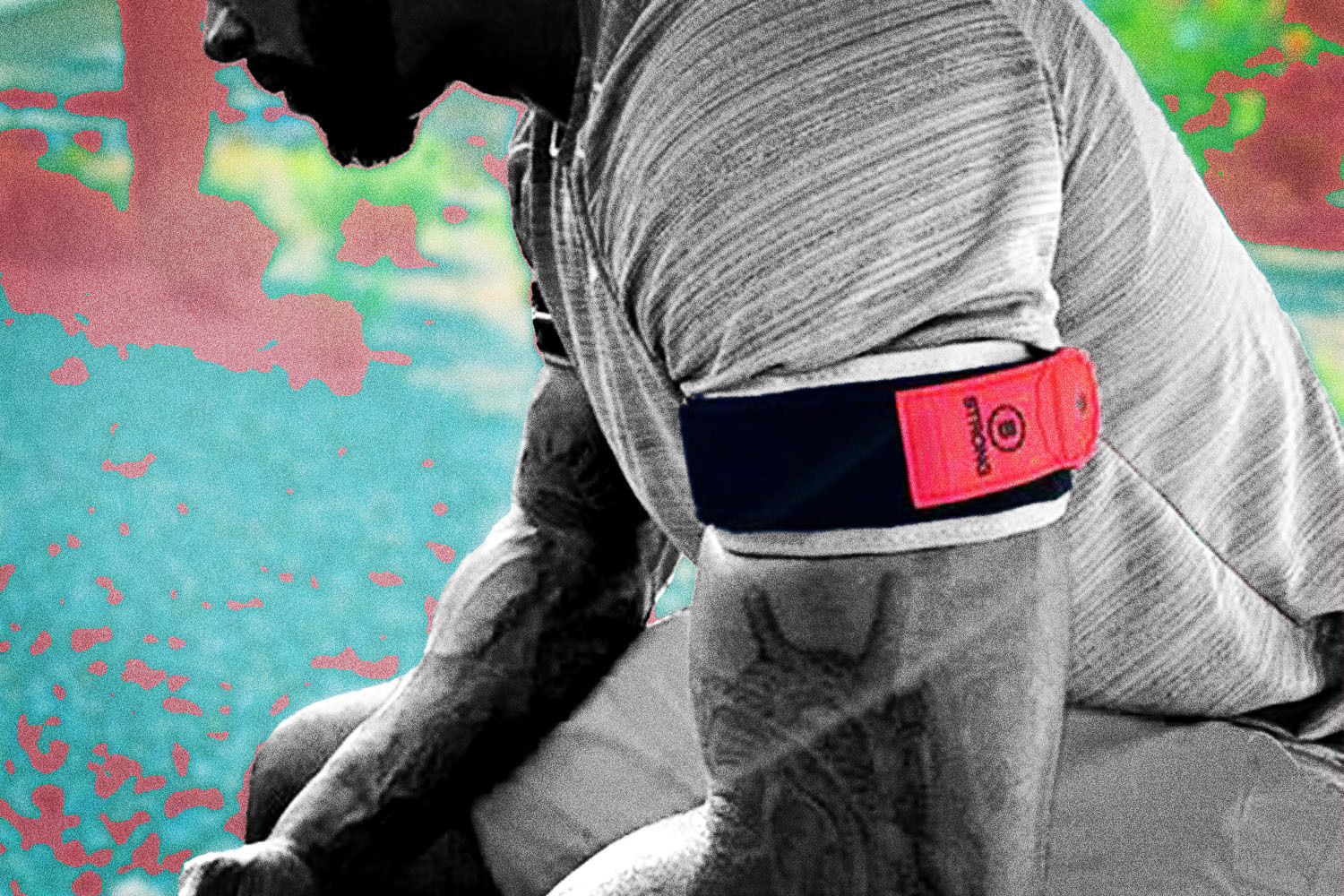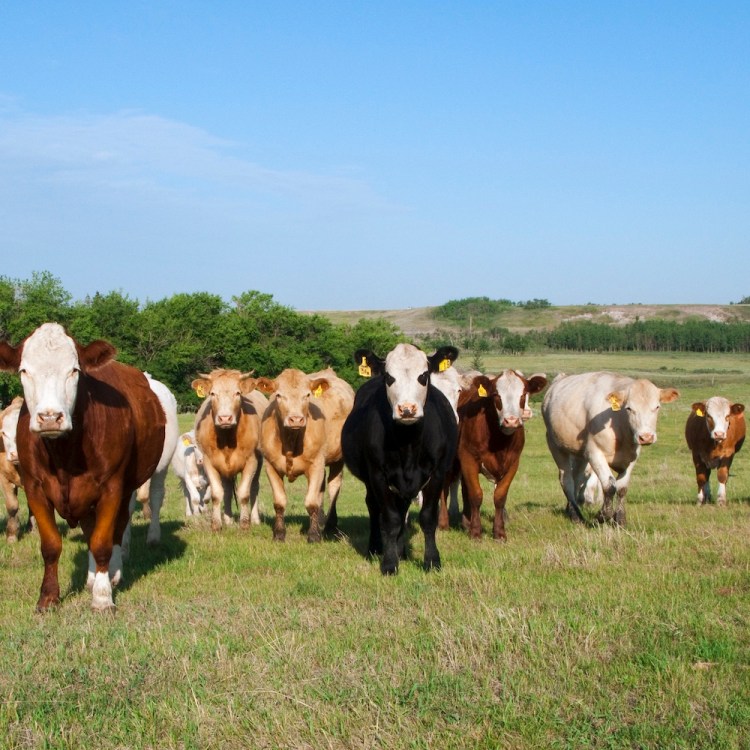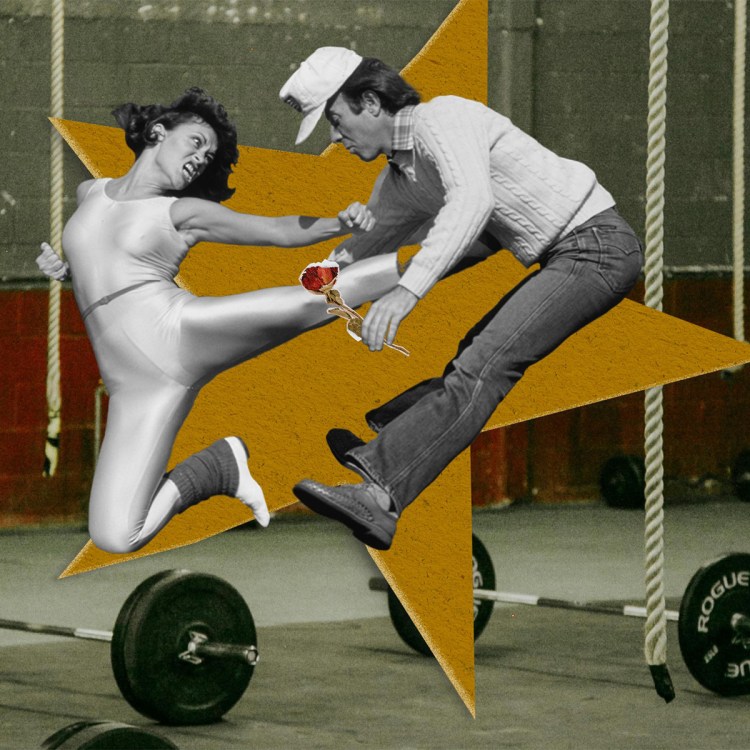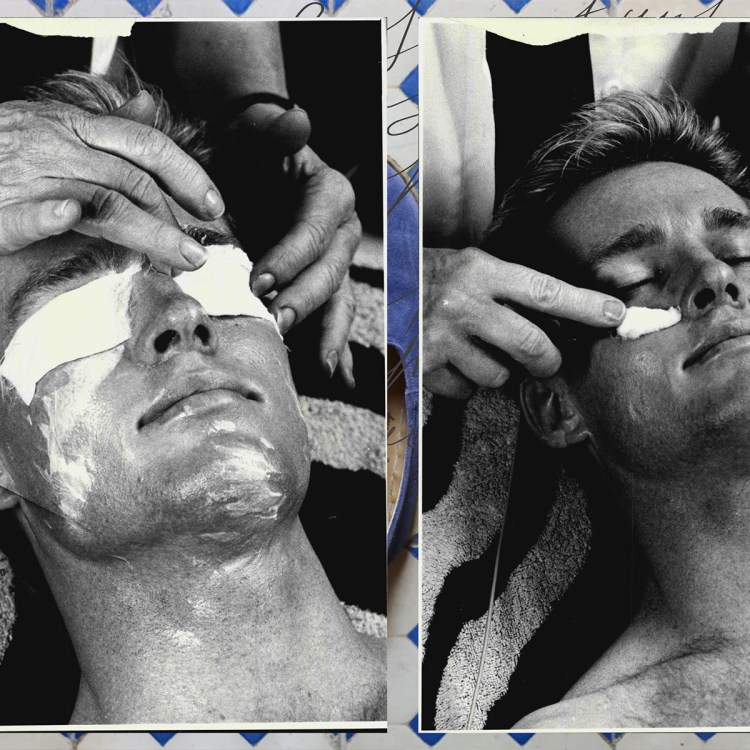Last month, professional golfer Bryson DeChambeau posted a video to his YouTube channel titled “What I did during last year’s quarantine to change myself.” It’s four-and-a-half minutes of the 27-year-old putting in work in his garage gym, steadily adding 20 more pounds of muscle to his already-beefy 6’1″ frame. In three months, DeChambeau managed to match the total amount of bulk he’d added since he graduated from college in 2015. Which means this photo, from his tenure at SMU, is actually 40 pounds ago. It looks it. These days, DeChambeau more resembles Gronk than his 21-year-old self.
DeChambeau’s transformation has inevitably drawn comparisons to Tiger Woods, who came up in the late-’90s with a pair of nine-irons for arms, yet over the next decade assumed the body mass of a heavyweight boxer. Speaking at a presser before the 2020 Masters, Woods said of DeChambeau, “What he’s done in the gym has been incredible … to transform his game, and the ability to hit the ball as far as he has, and in as short a span as he has, it’s never been done before.”
So far, it looks like the training worked. DeChambeau tied for fourth at the PGA Championship last August, won his first major, the US Open, in September, and finished third this past March at The Player’s Championship. His success has brought even more attention to the fitness side of golf, a discussion these days that includes biometric tracking and high-intensity cardio (Rory McIlroy leads a cabal of Tour players obsessed with Peloton).
There was a time when Tiger walked a long, lonely road on the pro golf wellness front. Rather, he ran it — a profile by The New York Times once reported that “in his 20s, Woods obsessively ran about 30 miles a week.” While golfers of yesteryear had won tournaments on diets of beer and pimento cheese sandwiches, Tiger “made it his mission to change the perception that golfers were not real athletes.” So he lifted, too, even though that was “an activity players before him had avoided, in the belief that big muscles would restrict flexibility and impede their swings.”
By the early 2000s, the Sunday reds couldn’t hide his muscles any longer. Adolescents like DeChambeau, McIlroy, Dustin Johnson and Jordan Spieth — all athletes who might’ve had success pursuing other “real” sports — took notice, and have credited Tiger over the years with inspiring them to take the gym as seriously as they did the range.
Still, it’s difficult not to wonder if DeChambeau’s shoulders are an overcorrection, a potentially unsustainable answer to the question of how much influence strength training can have in the modern game. He now claims the longest driving distance in golf, with an average of 322 yards. (As those in the sport would say: he’s “trained speed,” and it’s worked.)
But consider: there are young guys highly capable of outperforming DeChambeau over a given weekend who don’t look like they know a barbell from a dumbbell. Guys like Will Zalatoris, listed at 165 pounds, who finished second at the Master’s last month, where DeChambeau finished in 46th. Zalatoris’s average drive is 306 yards, tied for 23rd among active pro golfers. He’s an inch taller than DeChambeau, and almost a hundred pounds lighter, but his tee shot only falls 15 yards behind.
That distance can make one hell of a difference in golf, there’s no doubt about that. It can mean bypassing treacherous bunkers or getting around a dogleg. But is it enough to justify an extensive, consistent bulking routine? Could so much attention on building one’s body get in the way of fine-tuning the minute details of a highly-technical game? Is it possible to overtrain the body? To get too big? How might that increase risk of injury? Or has DeChambeau — and other gamely acolytes — tapped into something special? Will finesse players fall behind as the PGA turns into a veritable “arms race”?
To help us understand the sport’s super-sized revolution, we recruited a small panel of certified trainers and golf nuts. Below, find ruminations on bulking routines, injuries and the difference between Rory McIlroy and The Rock.
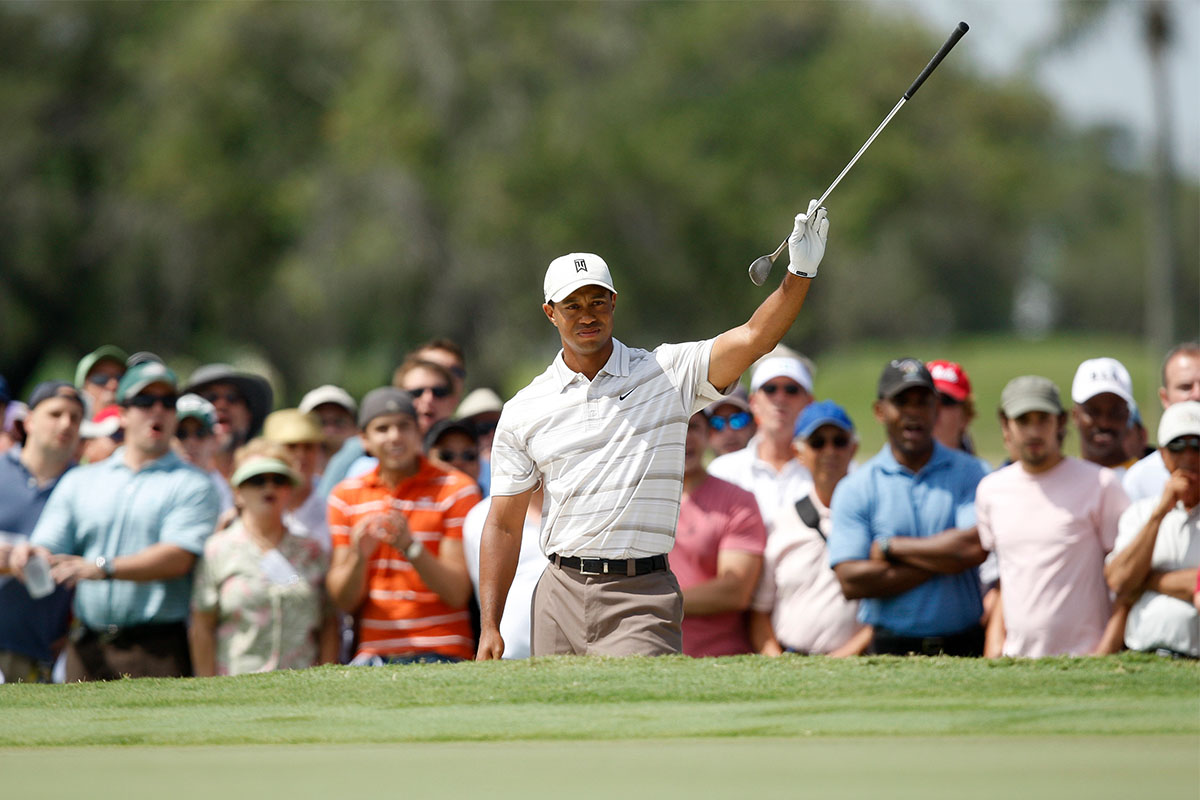
Why would a golfer want to bulk up in the first place?
“No doubt, professional golfers are getting serious about their fitness lately. Lifting heavy weights improves performance by giving the muscles more strength and flexibility. A stronger, more flexible body is able to swing with more power and clubhead speed. The higher the clubhead speed, the farther the ball can travel.” — Gary Watson, Chief Editor at GolfAssured
“I wouldn’t necessarily call it your typical ‘bulking,’ in the same way that a bodybuilder bulks. Golfers are gaining muscle mass and size. Why? In the modern game, hole lengths are all getting much longer. [Editor’s note: In the early 2000s, go figure, this trend was often referred to as “Tiger-proofing” courses.] There’s a much greater need for golfers to be able to hit the ball farther. Plus, you have the emergence of competitions where the sole aim is to hit the ball as far as you can. Think about social media, where a short clip of someone hitting the ball 400-500 yards is going to be more interesting to people than someone working on their two-yard putting skills.” — Jack Coxall, Co-Founder and Personal Trainer at Fitness Lab
“Strength training builds stronger muscles, improves a golfer’s driving and carry distance, increases swing speed as the muscles get stronger, boosts the force power of a swing (which helps with distances and velocity), improve a golfer’s flexibility, reduces the risk of golf injuries, and fortifies the core muscles, the forearms and grip strength.” — John Gardner, Certified Personal Trainer, CEO and Co-Founder of Kickoff
“There’s this old myth that muscles make you slow. Just because you don’t compete to lift the most weight in one max-out repetition doesn’t mean being stronger won’t benefit you. It’s odd to compare golfers to boxers, but in the world of combat, strength training was long scorned. Now we’ve seen this big change in the last 10 years, as people have come to face reality. Size and strength equals force and power. And the same physics that land a KO are also what sends a golf ball flying.” — Tobias Sjösten, Athlegan
What sort of movements should a golfer focus on?
“Upper body: chest, shoulders, triceps, biceps, forearms and hand strength. Lower body: hamstrings, quads, hips, calves, ankle mobility. That sort of focus gives golfers more power and control off the tee, plus more stamina (or less fatigue, at least) after taking big swings on long courses. Explosive lifts will be particularly effective for this. Think power cleans (or hang cleans), deadlifts and plyometric dumbbell workouts with boxes.” — Alex Smith, Fitness Training Star, frequent player at World Golf Village
“It isn’t about particular muscle groups. They don’t have a typical ‘chest day’ or ‘leg day.’ Their training focuses on fundamental movement patterns: pulls, squats, hip hinges, lunges, braces and carries. Plus, they practice closed skill movements like jumps, slams and throws, which are similar in nature to a golf swing. ‘Closed’ means these movements have a start and an end, and the golfer is in full control of the movement. A majority of the attention is also spent on rotation versus anti-rotation. Golfers spend a lot of their time rotating just one way. They need to balance that rotation the other way, to ensure there isn’t a huge imbalance. This maintains equilibrium in the body.” — Coxall
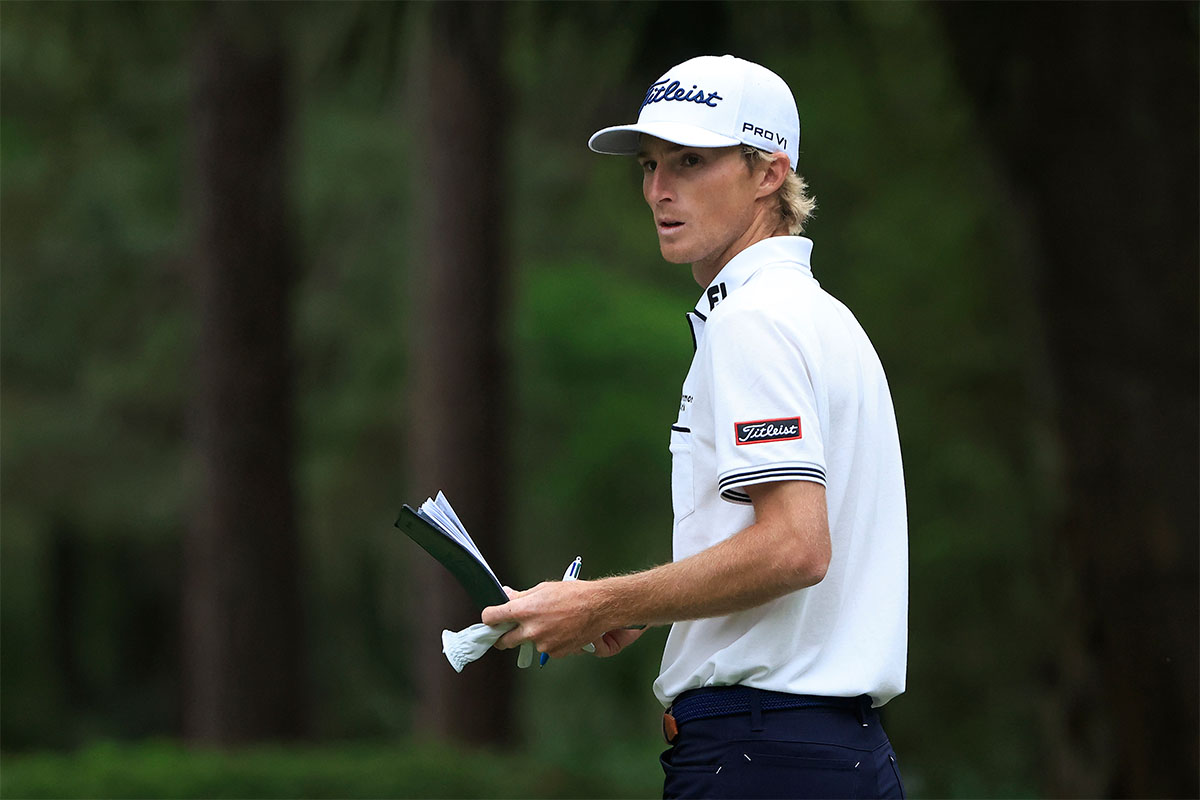
Could this much lifting lead to injury?
“With this increased strength, you are actually much more resistant to injury. There is a reason the best athletes are those who always seem to be available. When you train properly, you’re far more robust. With the repetitive nature of golf — one rotation going the same way over and over again — the likelihood of injury without correct prevention and training is inevitable. If a sensible, manageable program is put in place that compliments the real work of practicing your golf game, there are no drawbacks.” — Coxall
“One thing to consider: it’s possible to get injured when lifting heavy weights improperly. For example, it’s quite common to get back injuries while deadlifting. That’s obviously the last thing you want to do to yourself.” — Watson
“The only pitfall I see with adding heavy strength training to a golf development program is that it could strain your tendons and ligaments. Think about that combination of lifting a heavy barbell with the constant repetitions of the swing. To avoid this, I would program frequent ‘de-load’ weeks in the strength training, to allow for the connective tissue to recover fully, adapt and catch up.” — Sjösten
Is bulking ever not a good idea?
“The crucial part about beefing up for a golfer is whether it fits their style of play. There’s usually a tradeoff between power and level of detail in the movement. So if your game is built around delicate and detailed shots, then adding huge muscle mass might give you the worst of both worlds. However, if all that’s missing is yards on the drive, then adding muscles is an obvious solution and can work wonders, as we’ve seen with DeChambeau.” — Denny Putsh, Chief Editor at Hitting the Golf Ball
“It becomes a negative and causes issues only when the strength training takes away from the sport itself. Golfers play golf; they aren’t power lifters and they aren’t body builders, so they shouldn’t train in the gym as such. There is a huge amount of technique involved within the golf swing. You can’t simply rely on muscle mass and size. If you asked The Rock and Rory Mclroy to each hit a golf ball as far as they could, you can bet your money Rory would win. Still, combine these two elements — the high level technique these golfers possess, plus a chance to increase power and force — and you are going to be onto a winner.” — Coxall
“These are competitive guys. It’s human nature to want to improve numbers in the weight room. That could cause an issue when trying to get personal highs, and could come at the expense of your motion and flexibility on the course.” — Smith
What about non-lifting golfers? Will they be left behind?
“Not necessarily all of them. A lot of the smaller guys can still hit it a long way. They’ve trained their bodies since they were little kids to last 18 holes.” — Smith
“If a structured, sensible plan isn’t included as a golfer, you’re just missing a trick. You won’t be able to hit the bar as far, and will be more prone to injury. Golfers who spend more time in the gym will ultimately spend more time on the range, more time on the putting green and more time on the course. Strength training isn’t going to make these guys better golfers. But it will allow them more time to practice becoming a better golfer. The best ability is availability.” — Coxall
The Charge will help you move better, think clearer and stay in the game longer. Subscribe to our wellness newsletter today.
